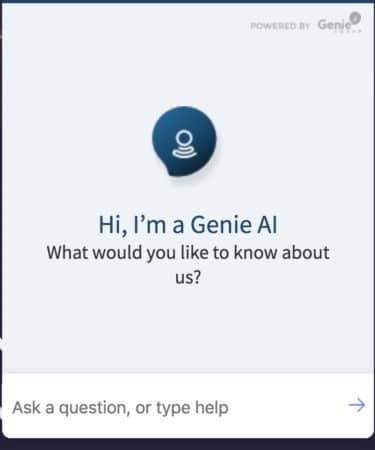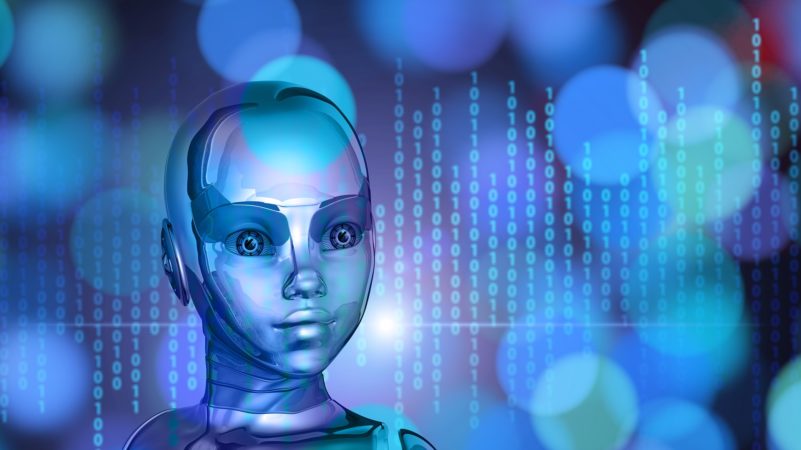The marriage of AI and blockchain looks set to be a lasting one. This year, there is a deluge of blockchain AI projects bursting onto the market, converging the two technologies in a variety of innovative ways.
It can be problematic to draw clear categories for all these use cases, let alone keep pace with every single project out there. However, this article will explore some of the problems that AI and blockchain can combine to solve–and look at examples of blockchain AI solutions currently under development.
Why Converge Blockchain and AI?
To put it simply, blockchain can serve as an enabler for AI technologies. AI consumes a vast amount of computing power, incurring considerable costs to run on centralized servers.
Because of this, centralized AI has been almost solely under the control of big companies like Google or IBM, that have the budgets to invest in the technology. Decentralizing the computing power across many nodes in a network brings the possibility of AI development to smaller startups.
Blockchain also brings transparency and security benefits to AI. Decisions and outcomes of machine learning are opaque when they take place within a centralized company. If an AI machine makes a “bad” decision or action, it could prove difficult for people to trust it again.
Even worse, the company responsible for the device might attempt to manipulate data as a cover-up. Blockchain can record AI decisions, and the data used to drive them, securely and transparently. This transparency will help to build trust in AI machines.
Classifications of Blockchain AI Projects
Let’s look at four broad classifications of blockchain AI projects: decentralized intelligence, trading, chatbots/conversation, and predictions. Classification is not an exact science and there are potentially many other classifications. However, these four currently have some worthy projects under development.
Decentralized Intelligence Services
There are two standout players in this game – SingularityNET and DeepBrainChain.
SingularityNET is a decentralized AI marketplace that allows any tech startup to create and monetize AI services at scale. Essentially, it creates a way for AI machines to talk to one another, share the machine learning process and become self-developing.
Pooling intelligence in this way overcomes the scalability issues currently faced by AI. As things stand, one AI robot generally serves one task, which does not optimize the learning process across different machines.
The company is the brainchild of Ben Goertzel, who was involved in the development of AI robot Sophia. Sophia is set to be one of the first use cases of SingularityNET. The robot will learn from the other machines hooked up to the network while sharing her own learning and intelligence.
(Should that be “its learning and intelligence”? We really need to establish some correct pronouns for an AI robot!).
If you haven’t seen Sophia in action yet, check out this interview with CNBC:
DeepBrainChain is on a related mission. The company is creating an AI cloud network that has one clear aim–to decentralize the processing power needed for AI. Decentralization reduces the costs for new players entering the market by up to 70 percent.
DeepBrainChain and SingularityNET recently announced a partnership, allowing the sharing of data between both platforms to exploit the full benefits of decentralized AI.
Believe it or not, you can also follow Sophia on Instagram.

AI and Trading
Auton.io and AiX are two blockchain AI projects aiming to break into the trading space but in very different ways.
Auton.io is a decentralized, AI-driven trading bot that allows high-frequency crypto traders to set up trading algorithms. The AI software monitors the crypto markets and makes automatic trades based on conditions defined by the user.
You can use this software in trades on many existing exchanges including Kraken and Bittrex. The company is also creating its own native decentralized exchange.
AiX is targeting the use of AI and blockchain to replace one of the intermediary roles in the complex arena of traditional trading–the Inter-dealer broker (IDB). This role provides financial market information such as price and liquidity for trades between banks where there is no formal exchange in place.
Of course, eliminating the need for a middleman is what blockchain does best. AiX believes machine learning expertise on the blockchain can replace the IDB role. The company estimates it can reduce commission fees taken by traditional IDBs by up to 50 percent, which is no small change in a market AiX says is worth over $6.5bn.
Chatbot and Conversation AI
Talla is a company providing AI-powered chatbots and knowledge bases for use in back office functions like IT. The company has seen the potential of blockchain to open the “black box” of AI decision making and as such is developing Botchain.

Botchain is an Ethereum-based platform that allows audibility of bot-based conversations. Decentralization also creates the opportunity for different chatbots to collaborate. Collaboration serves to enhance the core Talla offering of knowledge bases, as bots can share intelligence gleaned from different interactions with humans.
Indorse is another example. The company is creating a blockchain platform that aims to decentralize the skills economy. Think LinkedIn, on the blockchain. Members can increase their reputation score and earn tokens by adding their skills and projects and endorsing those of others.
Indorse foresees that chatbots could be used to verify skills. For example, a chatbot could ask someone with developer skills to provide some lines of code that would apply in a particular scenario. Machine learning and natural language processing will improve the accuracy of the chatbots to determine skills over time.
AI for Predictions
Finally, two blockchain AI projects aiming to generate crystal-ball style predictions and forecasts are Endor and Senno. The two projects have some differences–Senno is built on the NEO blockchain, whereas Endor has its own chain. However, both have a similar vision–to enable users to ask any predictive question and get an accurate answer based on crowd wisdom.
Previously, crowd wisdom (or “social physics” in the language of Endor) was only available to big companies like Facebook. Such companies have access to vast amounts of user sentiment data, along with the budgets to fund the necessary processing power.
However, AI companies plan to exploit the other element of decentralization–distribution of data–crunching power over multiple nodes. Combine this with AI traits like natural language processing and machine learning, and the systems can process vast amounts of user data in a way that creates a powerful prediction engine.
Futuristic Tech
These are just a few examples of blockchain AI projects. There are many other new entrants also using this combination of new technologies to innovate on their ideas. Bringing together blockchain and AI creates something far greater than the sum of its parts.
Combining AI with other new technologies, such as the Internet of Things, may bring even more significant developments in the future. These convergences are the very cutting edge of futuristic tech, making it an exciting time for even the most casual observers.
[thrive_leads id=’5219′]
Never Miss Another Opportunity! Get hand selected news & info from our Crypto Experts so you can make educated, informed decisions that directly affect your crypto profits. Subscribe to CoinCentral free newsletter now.










